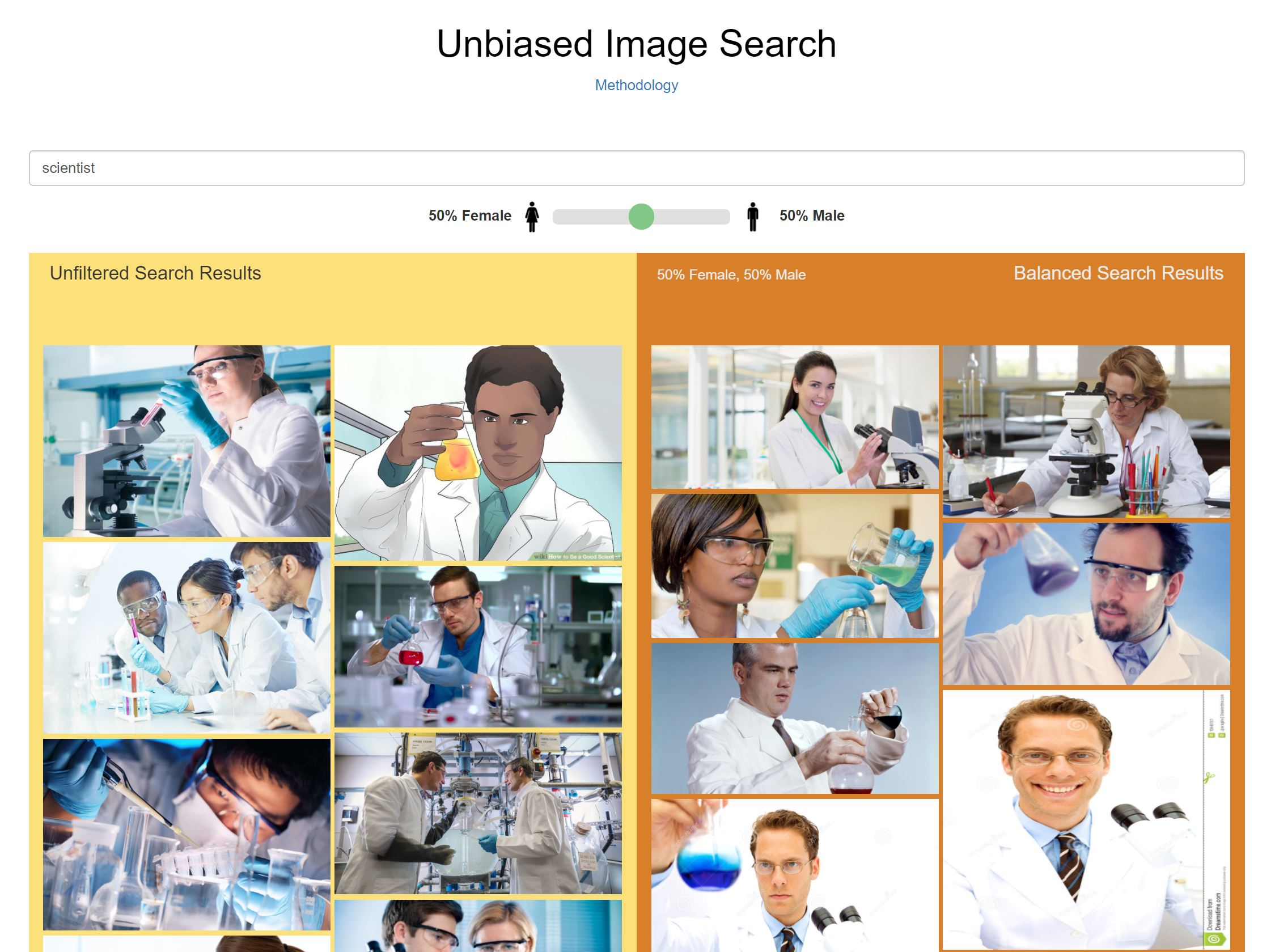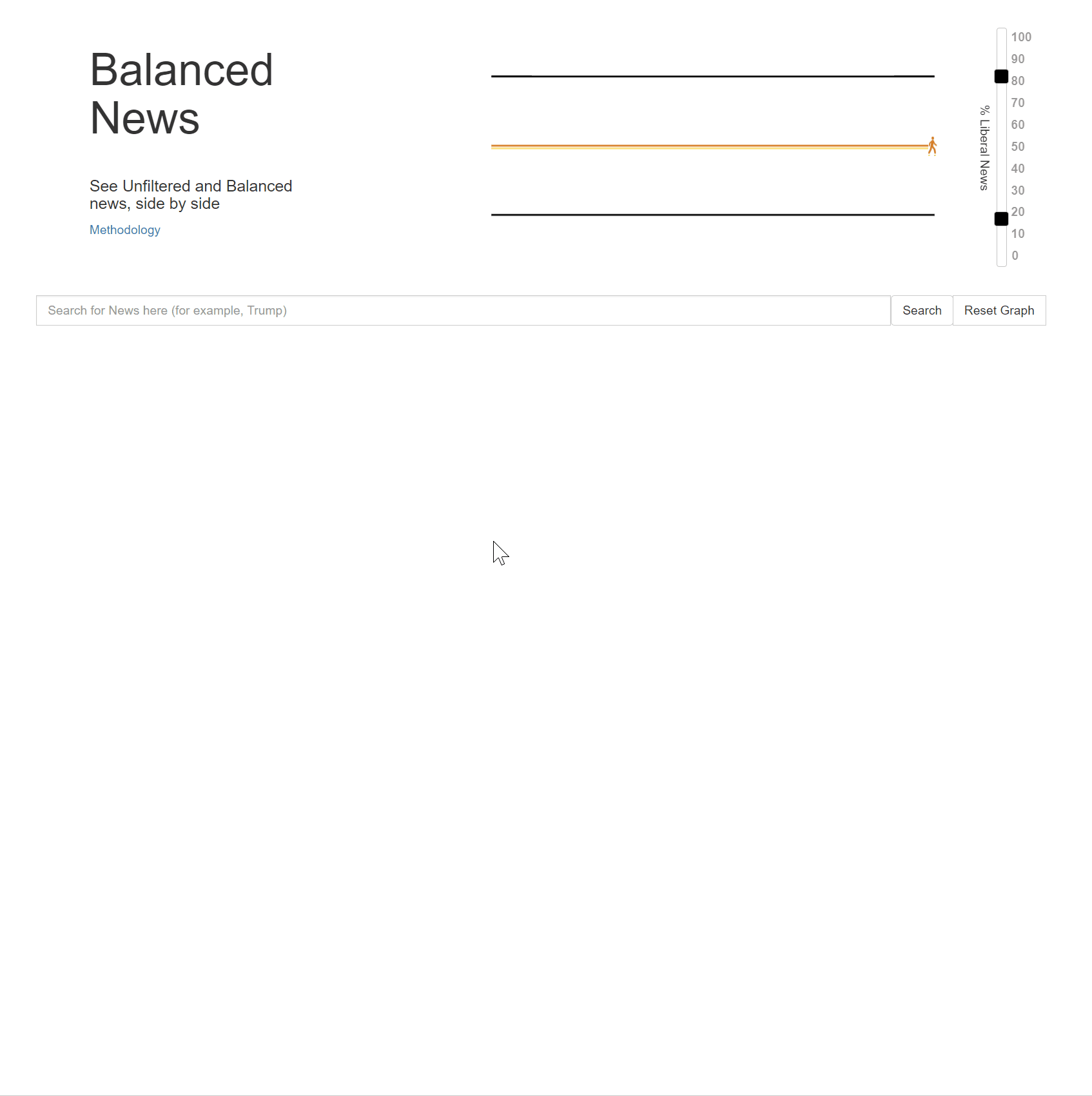Methodology: Balanced Search
Existing approaches to personalizing content for news content delivery can often lead to opinion bubbles. As a user clicks on more content of a particular type (say a liberal clicking on links from liberal media outlets, or a conservative doing the same for conservative media outlets), current content delivery engines polarize completely, to display articles only of a certain type. For example, they begin to show only liberal-favoring content to the liberal audience and only conservative-favoring content to the conservative audience.
Balanced search is a prototype aimed at demonstrating novel algorithms that can be used for delivering diverse content. Our algorithms optimize content in the presence of constraints, that is, we can set limits on how much or how little content of a particular group we want to see. These groups can be liberal or conservative (as in the context of news search), male or female (as in the context of searching for images of people in a certain occupation) etc.
Image Search
Our Image search prototype gives balanced image search results with respect to gender in the context of occupations. The tool allows you to search for a profession and adjust the gender ratio in the image results using a slider. We compare unfiltered image search results with the balanced image search results that our tool provides.

Take a look at balanced image search here.
News Search
In our news search prototype, we demonstrate what a balanced content delivery engine would look like. We compare our news content delivery (balanced news) with existing approaches (unfiltered news).
The slider on the right side of the graph controls the upper and lower constraints on the percentage of liberal (and so automatically, conservative) content that is shown in the balanced news feed. The graph shows the percentage of liberal news in the news feed, with the darker line representing balanced news, the lighter line representing unfiltered news, and the black lines representing the upper and lower constraints.

The blue links in the news feed are articles from liberal-favoring news sources, whereas the red links are from news sources with a conservative bias. When we click on blue links, the percentage of liberal articles in the news feed increases. Similarly, when we click on red links, the percentage of liberal articles decreases (and conservative articles increases). In this way, our clicks influence the content that we see in our news feeds.

As long as both lines are within the constraints, both news feeds are exactly the same. This is because, since the constraints are already being satisfied, our algorithm outputs the same optimization results as the existing approaches.
However, once enough articles of only one type are clicked on, the lighter line crosses the constraints. It is then that the balanced and unfiltered news searches differ. In fact, given enough clicks on articles only of a certain type, the unfiltered news starts displaying content belonging only from that kind. Balanced news, on the other hand, always displays a certain minimum percentage of both kinds of articles (as fixed by the constraints).
The red and blue signifiers for the articles are based on the information from AllSides.
Take a look at balanced news search here.